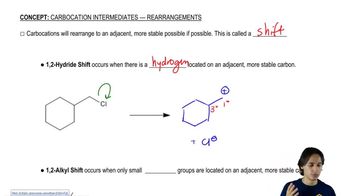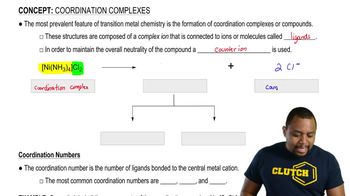Here are the essential concepts you must grasp in order to answer the question correctly.
Hydride Shift
A hydride shift involves the migration of a hydride ion (H-) from one carbon to an adjacent carbon, often to stabilize a carbocation. This rearrangement can lead to a more stable carbocation, facilitating subsequent reactions. Understanding hydride shifts is crucial for predicting reaction pathways and product formation in organic chemistry.
Recommended video:
Reaction Coordinate Diagram
A reaction coordinate diagram visually represents the energy changes during a chemical reaction. It plots the progress of the reaction against the energy level, showing the transition states and intermediates. This diagram helps in comparing the energy profiles of stepwise versus concerted mechanisms, illustrating which pathway is energetically favorable.
Recommended video:
Concerted Mechanism
A concerted mechanism involves simultaneous bond-breaking and bond-forming steps, occurring in a single transition state without intermediates. This mechanism is often favored when it results in a lower energy pathway compared to stepwise processes. Understanding concerted mechanisms is essential for predicting reaction kinetics and stability in organic transformations.
Recommended video:

 Verified step by step guidance
Verified step by step guidance Verified video answer for a similar problem:
Verified video answer for a similar problem:



 0:47m
0:47m